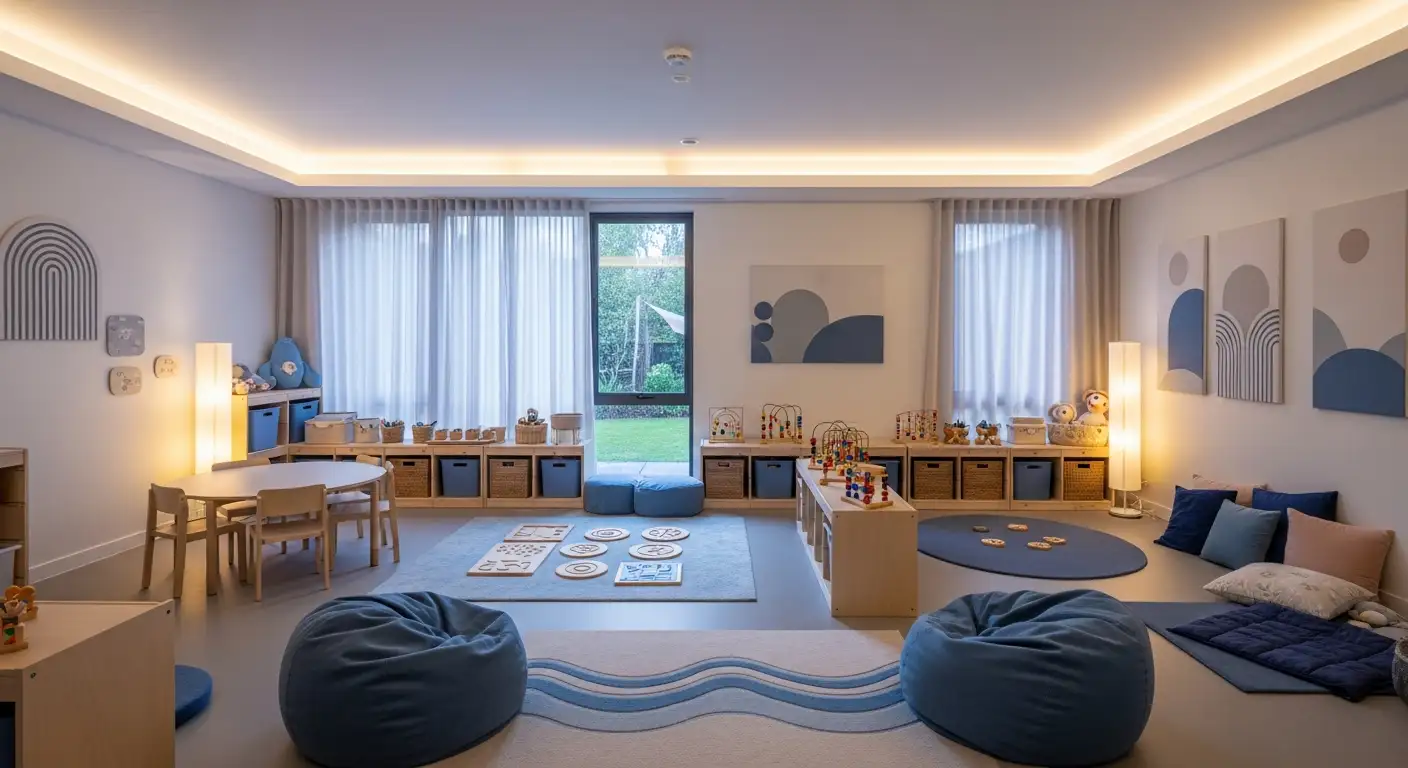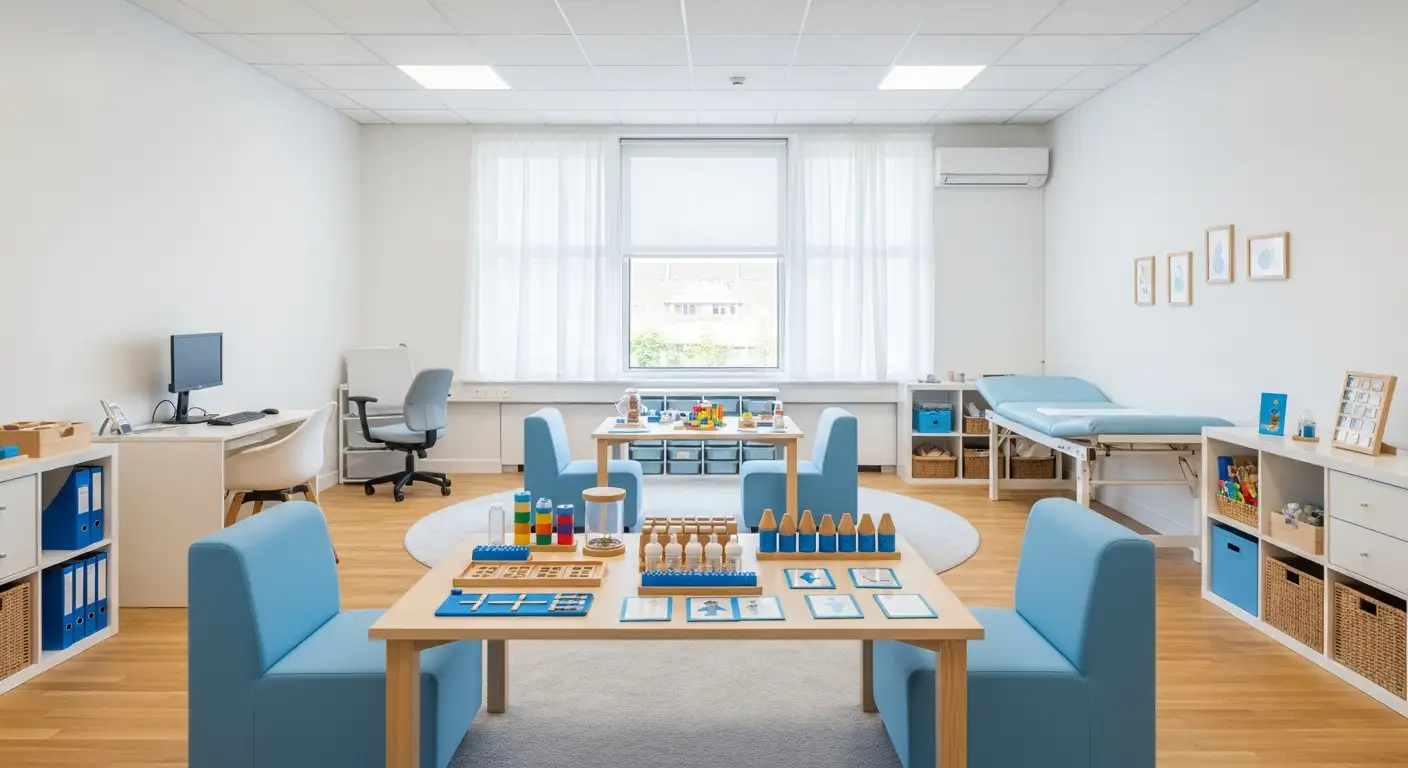
Understanding Sensory Processing
Sensory Processing Disorder Overview
Sensory Processing Disorder (SPD) is a neurodevelopmental condition impacting how the brain organizes and interprets sensory information from the environment. Individuals with SPD can experience varying degrees of difficulty in interpreting sensory stimuli, resulting in challenges in everyday activities. While SPD is not universally recognized as a standalone disorder, it is frequently associated with developmental conditions, particularly Autism Spectrum Disorder (ASD) [1]. Research indicates that over 80% of children with autism also experience sensory processing difficulties [2].
Common Symptoms and Reactions
Children with SPD may display a wide range of reactions to sensory stimuli, which can include extreme responses or surprising unresponsiveness. The following table summarizes some of the common symptoms and reactions typically observed in children with sensory processing challenges:
SymptomDescriptionExtreme ReactionsMay vomit or hide under a table at loud noises.Hypo-reactivityUnresponsive to heat, cold, or pain, failing to react appropriately.Sensory Fussy BehaviorAs babies, may be fussy, growing into anxious children.Difficulty with ChangeStruggling to manage transitions, often leading to tantrums.MeltdownsFrequent meltdowns can arise due to overwhelming stimuli.
Understanding these behaviors is crucial for families to navigate the complexities of having a child who may experience SPD. These reactions can significantly impact daily life, such as social interactions, learning environments, and family routines.
For more insights on how sensory challenges manifest in children, including practical examples, you can explore our article on sensory overload autism examples.
Sensory Challenges in Children

Understanding the sensory challenges faced by children can provide valuable insights for parents and families. Sensory processing disorders (SPDs) often lead to significant difficulties in navigating everyday experiences, impacting both the child's well-being and family dynamics.
Early Signs and Presentation
Children with sensory processing disorder often exhibit notable early signs. These can include extreme reactions to sensory stimuli, such as vomiting at loud noises or refusing to touch certain textures. Alternatively, some children may appear unresponsive to external stimuli, such as failing to react to extreme temperatures or even pain [1].
The presentation of SPD can begin in infancy. Fussy babies may later develop into anxious children who struggle with routine changes. Common behaviors include frequent tantrums or meltdowns, particularly in response to sensory overload. Notably, 5%–13% of children aged 4 to 6 years old experience these processing challenges, leading to substantial emotional and social implications [3].
Early Signs of SPDDescriptionExtreme ReactionsScreaming or hiding in response to loud noisesUnresponsive BehaviorNot reacting to extreme temperatures or painAnxious ResponsesFrequent meltdowns when routines changeSensory AvoidanceAvoiding certain textures or foods
Impact on Daily Life
Sensory processing challenges significantly impact daily life for children. Difficulty detecting, interpreting, and responding to sensory input can lead to struggles in various settings, particularly at home and school. These sensory symptoms often hinder communication and attention abilities, further complicating interactions and daily activities.
As a result, families may face increased stress due to the demands of managing these sensory challenges. Children with SPDs often experience internalizing issues (like anxiety) and externalizing problems (such as aggression), which can exacerbate family dynamics. The social and emotional consequences of SPDs can be debilitating, manifesting as difficulties in forming friendships or participating in group activities [3].
Daily Life ChallengesExamplesSocial InteractionDifficulty making friends or participating in group activitiesFamily LifeIncreased stress and emotional distress within the familySchool EnvironmentStruggling to focus or communicate in classroom settingsEmotional RegulationFrequent tantrums or meltdowns impacting routine
Identifying these challenges early on is essential for implementing strategies to support the child's development and overall well-being. For resources and strategies tailored to these needs, check out our articles on sensory overload autism examples and benefits of sensory toys.
Differentiating SPD and Autism

Understanding the distinctions between Sensory Processing Disorder (SPD) and Autism Spectrum Disorder (ASD) is essential for caregivers. While there are overlapping symptoms, recognizing the key differences helps in providing appropriate support.
Overlapping Symptoms
SPD and ASD share a variety of symptoms, making diagnosis a challenge. Some common symptoms include:
Over 80% of children with autism also experience sensory processing difficulties. Thus, it’s not unusual for those with ASD to exhibit symptoms characteristic of SPD.
SymptomSPDASDSensory SensitivitiesYesYesSocial InteractionsPotential issuesSignificant challengesRepetitive BehaviorsCommonCommon
Key Differences
While SPD and ASD have overlapping signs, they are distinct conditions characterized by different core features:
AspectSPDASDPrimary FocusSensory processing issuesSocial and developmental challengesPresence in AutismCan exist independentlyCommon among individuals with autismDaily Life ImpactSignificant sensory-related challengesChallenges in multiple domains
Understanding these nuances is vital for parents and families seeking support and resources related to sensory processing disorder vs. autism. Early intervention can improve outcomes for children facing either or both challenges. For further information on supporting children, refer to our articles on sensory overload autism examples and calming sensory room ideas for autism.
Diagnosis and Treatment Approaches
Understanding the diagnosis and treatment for sensory processing challenges is vital for parents navigating their child's sensory processing disorder or autism. This section covers the diagnostic process and therapeutic approaches available to support children.
Diagnostic Process
The diagnosis of sensory processing disorder (SPD) and autism spectrum disorder (ASD) often involves a comprehensive evaluation by healthcare professionals, including pediatricians, psychologists, and occupational therapists. It is crucial to differentiate between the two, as symptoms may overlap.
Several assessment tools are commonly used during the diagnostic process, including:
Assessment ToolDescriptionSensory ProfileEvaluates sensory processing patterns and their impact on daily life.Autism Diagnostic Observation Schedule (ADOS)Assesses communication, social interaction, and play in children suspected of having autism.Developmental, Individual Difference, Relationship-based (DIR) ModelFocuses on emotional and relational development, often utilized in the evaluation of children with sensory challenges.
Early identification is important as sensory processing difficulties can manifest as fussy infants who evolve into anxious children, facing challenges with change and experiencing tantrums or meltdowns. Recognizing these signs can lead to timely interventions.
Occupational Therapy and Sensory Integration
Occupational therapy plays a significant role in the treatment of sensory processing disorders. Occupational therapists work closely with affected individuals to create personalized therapy plans that cater to unique sensory needs. Sensory integration therapy focuses on enhancing the neurological processing of sensory information and creating adaptive responses.
Key components of occupational therapy may include:
For parents seeking additional resources, exploring sensory toys for autism may also be beneficial in creating supportive environments. Tailored strategies and therapeutic support can significantly aid children in managing sensory processing challenges, helping them navigate their world more comfortably.
Research Insights on SPD and Autism
Understanding the relationship between Sensory Processing Disorder (SPD) and Autism requires a closer examination of the genetic and neurological factors involved, as well as the differences in brain functioning between individuals with these conditions.
Genetic and Neurological Factors
Research has identified a significant genetic component in sensory processing challenges. A 2006 study involving twins revealed a strong link between hypersensitivity to light and sound in sensory processing problems. Abnormal brain activity was noted in children with sensory processing issues when exposed to simultaneous sensory stimuli [1].
Moreover, studies indicate that over 80% of children diagnosed with autism also experience sensory processing disorder [2]. This suggests a substantial overlap in genetic predispositions, although it is important to note that most children with SPD do not have autism.
ConditionGenetic ComponentSensory Processing ChallengesAutismHighOver 80% have SPDSensory Processing DisorderPresentNot all have autism
Brain Differences and Connectivity
The neurological underpinnings of SPD and autism reveal key differences in brain connectivity. A study at the University of California – San Francisco (UCSF) Benioff Children’s Hospital found that children with sensory processing disorder exhibited greater disconnection in specific brain tracts associated with sensory processing compared to those on the autism spectrum.
Individuals with hypersensitivity may face exaggerated reactions to sensory stimuli, making everyday environments overwhelming and potentially leading to discomfort or pain. Conversely, hyposensitivity leads to under-responsiveness to sensory input, affecting awareness and recognition of sensory changes in their environment.
These neurological differences can result in distinct behavioral manifestations. For children facing sensory overload, which often stems from an overwhelming amount of sensory input, symptoms may include severe anxiety and emotional distress.
Recognizing these factors is crucial for parents and professionals working to support children with sensory processing challenges, particularly in the context of autism. Understanding the interplay of genetics and brain function helps inform strategies for intervention and support.
Supporting Children with SPD and Autism
When navigating the unique challenges of sensory processing disorder (SPD) and autism, parents can take proactive steps to support their children. Focusing on effective strategies and creating supportive environments can make a significant difference in their daily lives.
Parental Strategies and Tips
Parents can implement various strategies to help their children manage sensory sensitivities effectively. It is important to observe the child's reactions under different circumstances to understand their specific sensory needs. Key strategies include:
Creating Supportive Environments
A supportive environment plays a crucial role in helping children with SPD and autism thrive. Parents can make adjustments at home, in schools, and in community settings to foster a more accommodating atmosphere.
By implementing these strategies and creating supportive environments, parents can significantly enhance their child's ability to navigate the challenges associated with sensory processing disorder and autism. Understanding the nuances of the condition and tailoring approaches to the child's needs fosters an empowering experience for both the child and their family.
References
[2]:
[3]:
[4]:
[5]:
[6]:
[7]:
[8]:
[9]:









